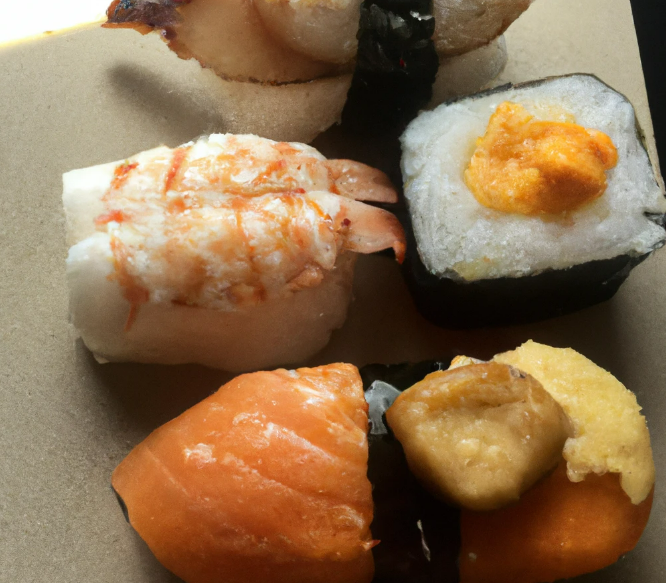Originating in Japan centuries ago, sushi is a dish made from cooked vinegar-seasoned rice rolled with various fillings such as seafood, vegetables, or egg. Not just limited to Japan, sushi’s unique taste and texture have made it famous worldwide. Traditionally, sushi was served as bite-sized morsels consisting of open-face rolls made with seaweed (nori) and filled with ingredients such as tuna or salmon. Over time different variations were introduced that use new methods of preparation and cooking, such as tempura or deep-frying; today, some countries also offer versions featuring regional ingredients like avocado in California rolls. Popular accompaniments to sushi can include soy sauce, ginger, and wasabi paste; these condiments not only add flavor but help to enhance digestion since this culinary delight can be notoriously difficult for many people’s stomachs to handle. Indeed, for food that has achieved the status of a global icon despite its humble beginnings so many centuries ago – there remains little doubt regarding sushi’s enduring appeal!

Sushi is one of the most beloved dishes in the world, and part of its appeal is that it can be tailored to almost any preference. what is the most common ingredient in sushi? Recently, sushi has become a vegetarian favorite thanks to imaginative substitutions like tofu and seaweed, but traditional sushi is still centered around fish. The most popular fish in sushi are tuna, salmon, yellowtail, sea bass, and mackerel — some of which may come from fresh or saltwater sources. While some people might have strong opinions on which type of fish tastes better with their rice and nori rolls, there are many delicious ways to enjoy sushi, whether made with saltwater or freshwater ingredients. For instance, those who don’t like the more robust flavor of saltwater-dwelling species might opt for silky soft mackerel from the ocean’s shallows as an alternative.
On the other hand, those looking for something light and fresh could find themselves with a morsel of brightly colored pink salmon. Ultimately, however one prefers their sushi to taste, there is no denying that freshly caught fish make seriously delicious bites no matter where they come from. And so long as proper hygiene protocols are followed during processing and preparation, saltwater or fresh fish can both provide an unforgettable culinary experience!
